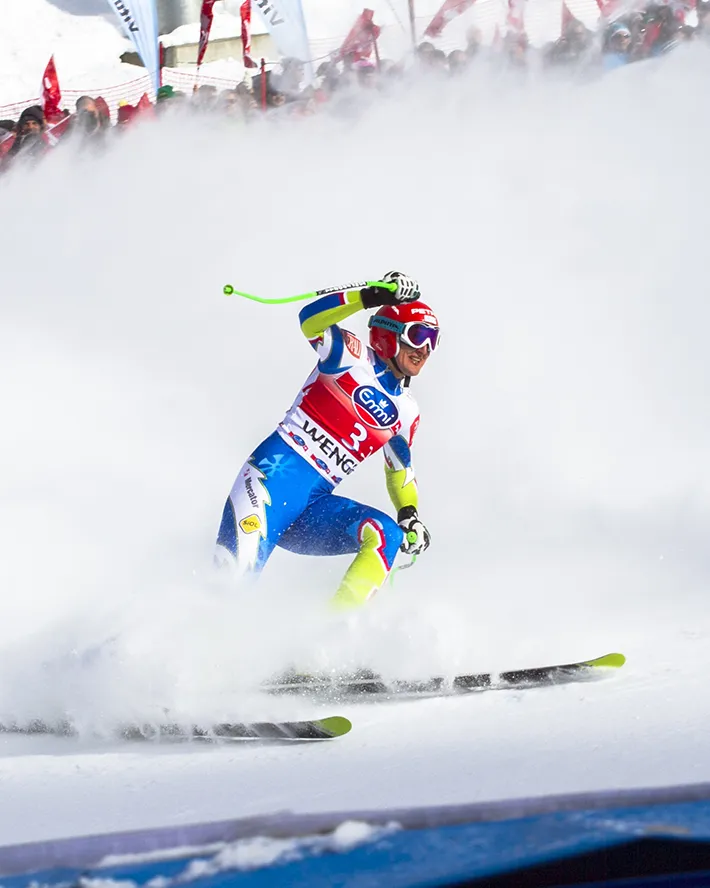Ski racing has a rich history dating back to the early 20th century, when the sport first began to gain popularity in Europe and North America. Over the years, many legendary ski racers have emerged, pushing the boundaries of what was thought to be possible and leaving a lasting impact on the sport. In this blog post, we will take a look at some of the pioneers who changed the game and helped shape the sport of ski racing into what it is today.
Recognising Avalanche Terrain
In this blog I deal with terrain and environmental factors that increase the risk of avalanche development. In his excellent book "Staying Alive in Avalanche Terrain", Bruce Tremper writes that seasoned avalanche professionals tend to develop a sixth sense in recognising when they are in avalanche terrain, so they can keep safe by acting accordingly. Clearly this is a key skill required for mountain professionals to have a long and happy career, but it's also important for those of us who are visiting the backcountry environment less frequently to have an appreciation of the key factors (or to hire someone who does to guide us safely!).
So what are the main factors to look out for?
1. Slope angle.
This is a massive factor, so much so that I've devoted a whole blog to this topic. I recommend reading the blog, but in brief, slab avalanches (by far the most common type) are very unlikely on slopes that have a gradient of less that 25 degrees or more than 45 degrees. For angles above 28 degrees avalanches become increasingly likely, with a maximum risk at about 35 degrees, before the risk begins to taper back as angles increase. One practical implication of this is that if you are going up or down on a slope of less than 28 degrees, and you are not exposed to other slopes that could avalanche, then you are very unlikely to be hit by a slab avalanche. Such slopes are ideal places for "high risk" days. A second is that if you are on a slope of 28-45 degrees, you'd better have done some assessment of the likely stability of that slope, and certainly if you see any of the red flags that I mention here, perhaps you might want to reconsider your plans.
2.Slope aspect.
Another biggy! Most slab avalanches happen on shady slopes. In the northern hemisphere, that means especially north and northeast facing slopes. There are two main reasons for this. The first is that shady slopes tend not to heat up so much during the day, so they're not exposed to the stabilising effects of heating and re-freezing. The second is that these slopes tend to have the best snow on them, so are often more likely to be skied. So remember, on the whole during the winter, sun on your face is safer than sun on your back (wear sunscreen whatever!). Spring skiing is different, as wet snow avalanches tend to occur on sunny south-facing slopes.
3. Wind direction.
Wind has a huge effect in transporting and depositing snow, forming the infamous wind slabs, or as you might see written on the pisteurs signs in French-speaking areas, "plaques du vent". Wind tends to scour windward slopes and deposit snow on leeward (sheltered) slopes. Often these deposits can be very extensive, as massive amounts of snow are transported to sheltered areas, and so can lead to significant slope overload and instability, just waiting to be triggered by an unsuspecting skier or boarder. Thus a key skill in the mountains is to be able to read wind effects on snow- look out for scouring, which indicates a windward slope, cornices, which happen on the leeward side of slopes, hollows behind rocks, or sastrugi, which occur parallel to the wind direction. Also look out for cross-loading on slopes that the wind has blown across. This leads to accumulation of snow in gullies, which can then be overloaded and unstable.
4. Altitude.
Avalanches are more frequent at higher altitude. This is for several reasons- temperatures are colder at higher altitudes, so the effect of thermal cycling on increasing stability is lessened, more snow tends to fall at higher altitudes, and winds tend to be higher at high altitude, so accentuating the wind effects mentioned above.
5. Anchors and Trigger Points.
Some terrain features can act as anchors that stabilise slopes. Often trees are thought of as anchors, but it's important to realise that this is only the case if they're quite dense- in fact, so dense that they'd be difficult to ski through. Rocks can also act as anchors when they protrude through the snowpack, but again, only when they are quite dense. On the other hand, if they are sparse, trees and rocks can also act as trigger points, as the snowpack beneath them may be thinner and more fragile. Other common trigger points include slope convexities (the snowpack is under more stress here), at the toe of rock faces, or beneath cornices (as these are common sites of persistent wind slab due to wind deposition).
6. Evidence of old avalanche activity.
Saving the most obvious for last! If you can see evidence of old avalanche activity around you, then you are clearly in terrain that is capable of producing an avalanche. You might see old avalanche run-out debris, old fracture lines, or evidence of disruption to vegetation (perhaps treeless chutes or evidence of broken trees or other vegetation). Be very respectful of such terrain, it has likely hurt someone in the past and will do so again.
Anyway, until next time, I hope you've found this useful. Remember to have fun out there- harmful avalanches are pretty rare and for the most part can be avoided with knowledge, common sense and the right attitude.


